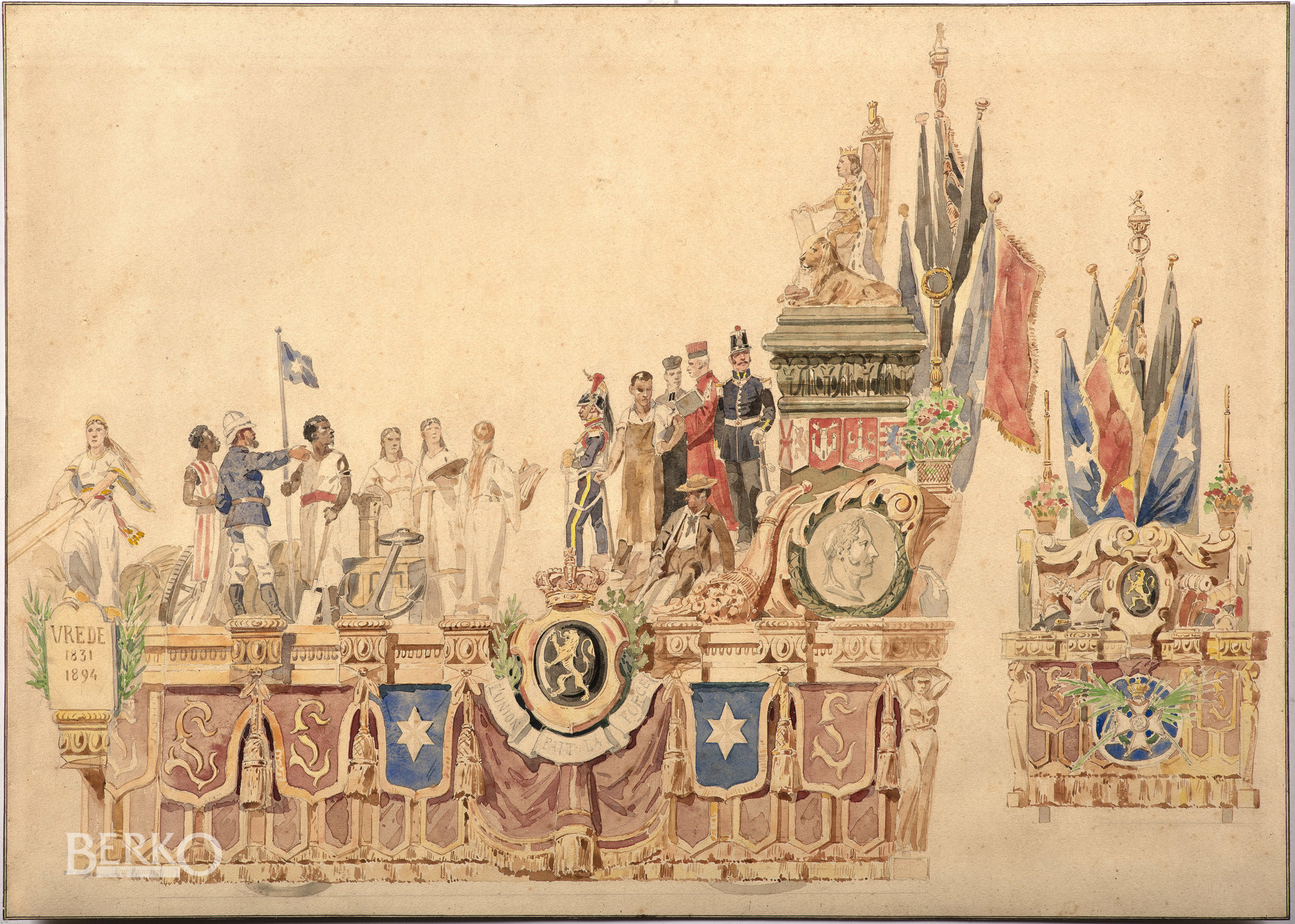GEENS Louis
DESIGN FOR A TRIUMPHAL CHARIOT, 1894
Watercolour and ink on paper: 43 x 61 cm
Painter of figures and military scenes. We are presenting an original design drawing for a triumphal chariot in a festive procession held in 1894, celebrating Peace after the Congo-Arab War (1831-1894): a conflict between the Belgian King Leopold II’s Congo Free State and various Zanzibari Arab slave traders led by Sefu bin Hamid, the son of Tippu Tip. The Congo-Arab War was fought in what is now the Democratic Republic of the Congo between the forces of Belgian King Leopold II’s Congo Free State and various Zanzibari Arab slave traders led by Sefu bin Hamid, Tippu Tip’s son. It was a proxy war in eastern Congo from 1892 to 1894, with most of the fighting being done by native Congolese, who aligned themselves with either side and sometimes switched sides. The war was caused by Leopold and the Arabs contending for the control of Congo’s wealth. The war ended in January 1894 with a victory of Leopold’s Force Publique. Initially, King Leopold II collaborated with the Arabs. Still, competition struck over the control of ivory and the topic of Leopold II’s humanitarian pledges to the Berlin Conference to end slavery. Leopold II’s stance turned confrontational against his once-allies. The war against the Swahili-Arab economic and political power was presented as a Christian anti-slavery crusade.
Shown are the left side and back side of wagon, with allegorical figures such as Prosperity, the Congo, the Arts, and Labour, paying tribute to Belgica, seated on a throne. The draperies on the wagon are adorned with an alternating L (Leopold) and the star of the Congo Free State. The triumphal wagon may have been designed for the occasion of the (unofficial) World Exhibition held in Antwerp in 1894.
Period:
Ghent 1835 - Ledeberg (Ghent) 1906
Belgian School
Exhibitions:
Brussels - Ghent
Literature:
P. & V. Berko, "Dictionary of Belgian painters born between 1750 & 1875", Knokke 1981, p. 303.

